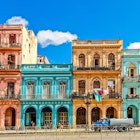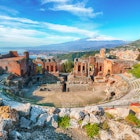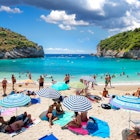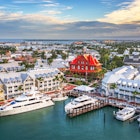
Dec 31, 2025 • 3 min read
Get ready for a trip to Kenya with this list of pre-departure essential tips, from books to read to knowing what to pack.

Dec 31, 2025 • 3 min read
Get ready for a trip to Kenya with this list of pre-departure essential tips, from books to read to knowing what to pack.

Dec 30, 2025 • 10 min read
Here's everything you need to know to plan your time in Perth, Western Australia's remote and laid-back capital.

Dec 30, 2025 • 4 min read
Cuba offers a tropical escape year-round, with cultural festivals, live music and gorgeous beaches. Here's how to pick the best time for your trip.

Dec 29, 2025 • 6 min read
Sicily astounds with its abundance of architecture, hiking and food. Here are our favorite things to do during your next vacation.

Dec 29, 2025 • 6 min read
Plan your travels – by bike or car – along Burgundy's famous Route des Grands Crus, a road linking vineyards in France's famed wine region.

Dec 28, 2025 • 7 min read
Corfu has everything Greek dreams are made of: turquoise waters, abundant sunshine and delicious local cuisine.

Dec 28, 2025 • 5 min read
The Caribbean has many beautiful beaches, but Curaçao's pairings of white sand and blue water aren't to be missed. Here are the best.

Dec 27, 2025 • 8 min read
With its snowcapped mountains, charm-oozing towns and thousands of miles of coastline, Mexico is a popular travel destination. Here's where to go.

Dec 27, 2025 • 9 min read
From cocktail-tasting workshops to ATV tours and more, these exciting activities will show you the best of Curaçao’s peerless cultural blend.

Dec 26, 2025 • 6 min read
Gorilla trekking in Uganda's national parks brings you eye to eye with mountain gorillas, an endangered great ape species.

Dec 26, 2025 • 7 min read
Finding the bargains amid Key West's quaint, touristed streets can be tough. Still, a visit to this wonderful place doesn't have to light your budget on fire.

Dec 26, 2025 • 8 min read
Fabulous beaches, storied cities, rural retreats and Europe’s largest volcano: Sicily has it all. Here’s where to go (and stay) on this storied island.

Dec 25, 2025 • 6 min read
Like the mythical Sirens tempting sailors, Greece lures travelers to its scintillating shores. Dream up an ideal Greece itinerary to these 10 locales.

Dec 25, 2025 • 4 min read
Belize is where Latin-flavored Central America meets the captivating culture of the Caribbean. Here's how you can choose the perfect time to visit.

Dec 25, 2025 • 8 min read
Before you set off for dreamy Greece, read our tips to help you with planning your trip, and navigating the country once you arrive.

Dec 24, 2025 • 7 min read
Known for its natural beauty, specialty ramen and outdoor adventures, Hokkaidō is a relaxed, laid-back and totally captivating Japanese destination.

Dec 24, 2025 • 10 min read
From Paris to Provence, make the most of your time exploring France's many delights with our pick of the top places to see.

Dec 23, 2025 • 7 min read
Beyond the obvious towns of Lisbon and Porto, Portugal promises vibrant historic cities, incredible beaches and wonderful wine regions.

Dec 23, 2025 • 8 min read
Two Lonely Planet writers go head-to-head, debating which Spanish island is better: Mallorca or Ibiza.

Dec 23, 2025 • 3 min read
When the winter blues hit, the cure lay in volcanic landscapes, sea air and sunrise beach yoga on the quieter side of the Canaries.

Dec 23, 2025 • 8 min read
Inside Tunisia’s compact borders, you’ll find everything you could ask for from the southern Mediterranean. Here are the best times to visit Tunisia.

Dec 23, 2025 • 13 min read
The fortunes of the Egyptian city of Alexandria have always been tied to its strategic location at the mouth of the Nile. Here are the top things to do.